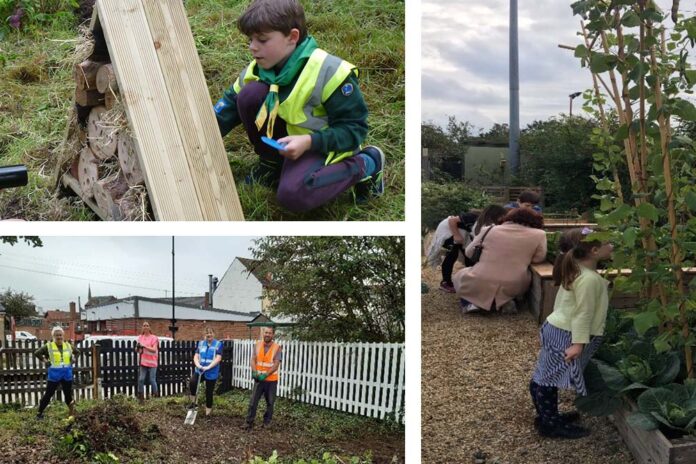A new report has highlighted how community and volunteer-led projects, nurturing and enhancing nature and wildlife, are spreading to every corner of Britain’s railway network.
The projects have been set up in a bid to contribute to biodiversity net gain.
The report, ‘Community rail and biodiversity,’ was produced by Community Rail Network with support from Rail Delivery Group (RDG). It highlights how community-based partnerships and groups, working with the rail industry, are delivering wide-ranging wildlife-related projects.
The initiatives develop stations as green spaces, provide habitats and food sources for insects, birds, and amphibians, support wider conservation efforts, connect people with nature, and offer multiple benefits to communities and ecosystems alike.
Community-led station gardens with a wildlife focus are becoming more widespread across the network, with schemes led by an increasingly diverse range of groups, including station friends, community rail partnerships ‘In Bloom’ groups, schools, colleges, environmental groups, and charities. Since 2016/17, Community Rail Network has directly funded more than 170 rail-related biodiversity, gardening, or wildlife-related projects in England alone, and the report includes case studies on a dozen inspiring projects spread across Britain.
Examples in the report include:
- Station adopters increasing the total area of station garden across the Greater Anglia network by 14% in 2020, and pledging 56 gardens to the ‘WildEast’ movement;
- ‘Buzzing Stations,’ a project to make stations in the High Peak attractive habitats for the endangered Bilberry Bumblebee, which is native to the area;
- The Friends of Goostrey Station using Geographical Information Service mapping to monitor different species of birds and bugs using the new wildlife habitats they install;
- Land at stations including Bottesford, Alresford, Sleaford, and Largs being transformed into community gardens offering wildlife havens and educational spaces;
- The ‘Secret Garden’ at Avonmouth Station, a former disused railway siding that has been developed into a food growing and learning scheme.
Building on a rich history of community gardening and community engagement, the report shows how community rail partnerships and station groups are increasingly conscious of the impacts they can make in this rapidly developing area. As well as enhancing natural environments and nurturing wildlife, the report highlights the associated benefits of such community-led projects, including physical and mental health, engaging young people and marginalised groups, and encouraging sustainable lifestyles and communities.
This work supports and links to rail industry and government strategies to enhance biodiversity and sustainability, including RDG’s ‘Sustainable Stations’ guide, Network Rail’s Biodiversity Action Plan, and the Department for Transport’s Rail Environment Policy Statement — which outlines community engagement as key to turning biodiversity net gain into practice.
Jools Townsend, chief executive of Community Rail Network, said: “Biodiversity is fundamental to our well-being and quality of life, and we face a worsening biodiversity crisis that communities can play a crucial role in addressing. Responding to this, around Britain, community rail partnerships and station groups, working with rail industry partners, are creating gardens, spaces, and habitats to nurture wildlife, building biodiversity gain into their work, and supporting local conservation efforts.
“These activities also bring social value, bringing people together and improving local resilience. They raise awareness of the importance of the natural environment and connect people with the diversity of life on their doorstep, using local railways and stations – our green transport network – as a focal point.”
Lucy Harper, policy manager at Rail Delivery Group, added: “Protecting and enhancing biodiversity is important for the rail environment, our passengers and their communities. It’s fantastic to see rail staff, passengers, and volunteers engaged in biodiversity projects across the network. We’re proud to support these initiatives in line with the industry’s pledge to improve sustainability, a commitment made when we published the RDG Sustainable Stations Guide in 2021.”
The report can be accessed via the Community Rail Network website.







































 0113 2082620
0113 2082620 info@railbusinessdaily.com
info@railbusinessdaily.com 15 Mariner Court, Wakefield WF4 3FL
15 Mariner Court, Wakefield WF4 3FL

